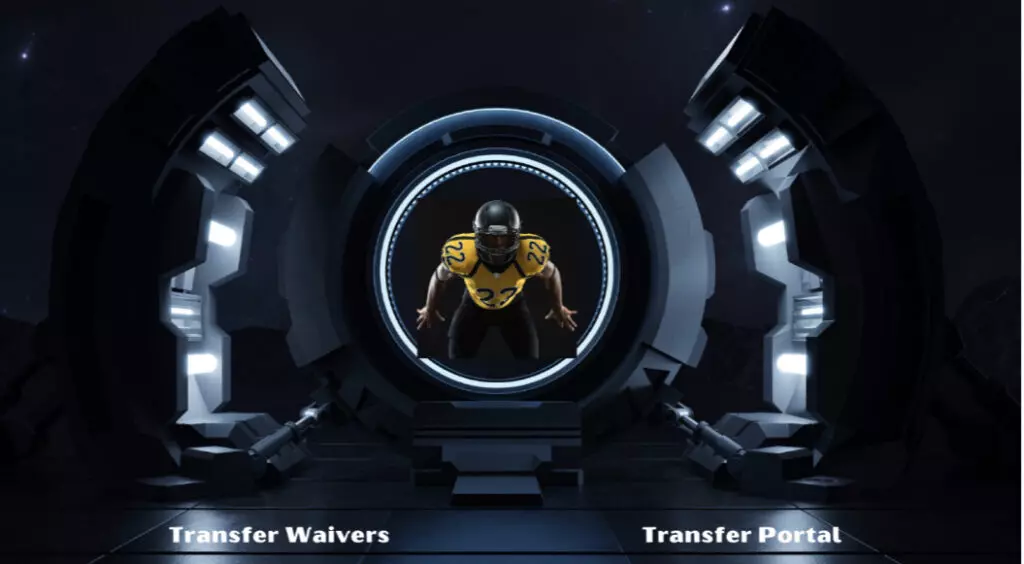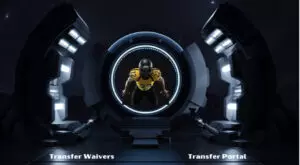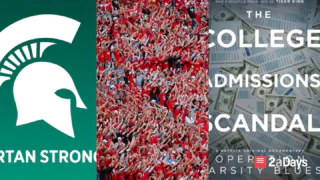Transferring to a new university in the middle of one's athletic career is a complicated process, made slightly easier by the NCAA's relatively new transfer portal, which also lifted some of the barriers athletes faced in the transfer process. Case in point: prior to 2018, if a Division 1 athlete wanted to transfer, they had to first get permission from their coaches, and if permission was denied, the athlete then could take it up with their athletic director. If the athlete still didn't get permission, s/he could check in with a campus administrator, then appeal to a committee as a last resort. If the athlete couldn't get permission at the end of that process, s/he could still transfer, but not accept aid from his/her new school. Even when an athlete did get permission from a coach, that didn't mean they were free to do whatever they wanted with their remaining eligibility. Coaches could also limit where an athlete could go. For example, if an athlete asked their coach to transfer and got permission, that coach could prohibit them from transferring to an in-conference school.
Not anymore, thanks to the NCAA's transfer portal, which debuted on October 15, 2018. According to the NCAA, the transfer portal is “an online interface that helps athletics compliance directors do their jobs efficiently,” and it was created “as a compliance tool to systematically manage the transfer process from start to finish, add more transparency to the process among schools and empower student-athletes to make known their desire to consider other programs.” The portal offers benefits for college athletes and athletics administrators. For starters, it saves time. Declaring for a transfer used to take days or weeks, and much of the process had to be done by hand, but now the process can start almost instantly. Administrators who have access to the portal can also access data more efficiently because it's all in one place.
Once an athlete submits a request to enter the portal, their university has two days to process it. Although coaches can no longer dictate where their athletes transfer, universities still get to decide on transfer portal policies, which don't always benefit athletes. For example, a school can drop athletic aid at the end of its term after an athlete enters the transfer portal. If the athlete ends up withdrawing from the portal, then the university can restore their roster spot and their aid, but it is not mandatory for them to do so. Therefore, it is important for athletes to review their financial aid agreements and talk to their coaches before making the decision to transfer.
To be clear, the transfer portal isn't the same as a transfer waiver, which is an agreement that an athlete can immediately start participating in team activities once s/he transfers to a new school. The NCAA's current rules mandate that college athletes competing in baseball, men's basketball, women's basketball, football or men's ice hockey sit out a season once they transfer unless they receive a waiver, which are usually only granted in “extenuating and extraordinary mitigating circumstances beyond the student-athlete's control.” Athletes competing in the aforementioned sports must apply for a waiver, or sit out a season once they transfer (unless they are graduate transfers, in which case, they receive immediate eligibility). All other athletes receive a one-time transfer waiver, which is probably why, according to the NCAA, “Over 80% of the waiver requests are in men's and women's basketball and football.” The NCAA also notes that “because those sports are immensely popular, scrutiny on the decisions is high,” and the Association has a history of denying transfer athletes for waivers that arguably fall under the aforementioned criteria. For example, in 2019, former University of Michigan offensive lineman, James Hudson, was denied a waiver after dealing with mental health issues, as was Virginia Tech offensive lineman, Brock Hoffman, who transferred to take care of his ailing mother, and was also denied.
If a Division 1 athlete wants to transfer, they must contact the compliance office of their current university to obtain a permission-to-contact letter, and a notice-of-transfer entry into the transfer portal, which must be completed by the compliance office within two business days. Coaches cannot discuss transfer opportunities with transferring athletes until this step is complete, although athletes can contact their prospective university for other reasons (admissions or financial aid, for instance). Then, once the athlete transfers, their new university must file for a transfer waiver if the athlete transferred for a reason that would justify a transfer waiver. The athlete cannot file for a waiver, so it's important for him/her to form good relationships with their new coaches and compliance officials to make the process as seamless as possible.
However, before considering transferring in the first place, it is wise for an athlete to review their current university's athletic aid policies and discuss financial aid implications with their current coach—remember, once your name is in the transfer portal, your school is no longer obligated to honor your scholarship. Check out the athletic handbook of your prospective university while you're at it, and read their team rules, financial aid policies, academic standards, and whatever other information is publically available. The more you know, the better you will be prepared to transfer to a new university.
* Originally published on October 5, 2020, by Katie Lever, Ph. D







